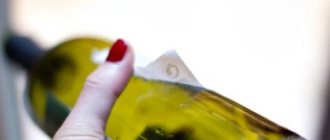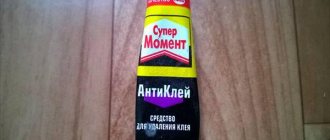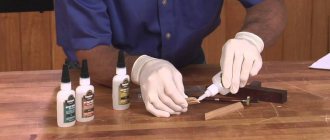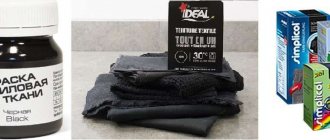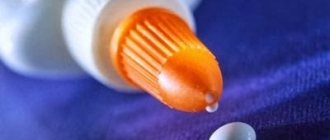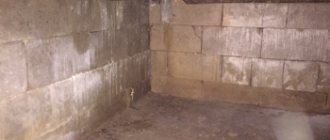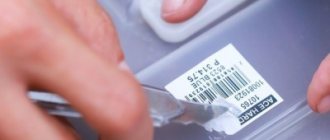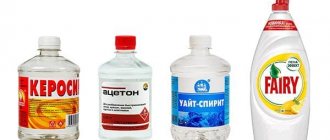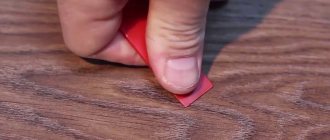Advantages and disadvantages
Nairite glue is a universal and very high-quality product, this is its main advantage. It contains only low-toxic substances, and glued products can be used without fear. Other advantages:
- high temperature resistance;
- elasticity, flexibility, plasticity even with decreasing temperature;
- connection reliability due to deep penetration into materials;
- resistance to water, salts, acids;
- ability to operate at low temperatures;
- preservation of properties during temperature changes.
The material is convenient to use and easy to use. The downside is the drying time - it is slightly higher than that of a number of analogues. But this allows you to calmly place the parts to be glued and have time to correct any flaws. The product does not need to be heated before application and gluing - a “cold method” of application is possible. After drying, it does not deform even the thinnest leather, so it can be used on expensive shoes.
Release form
Desmokol is sold ready for use. It can be in 50 ml tubes (Fig. 1), 1 liter metal cans (Fig. 2), or in granular consistency. For industrial purposes, the product is usually purchased in 20 liter buckets or 200 liter barrels. The granular type must be additionally mixed with a solvent, such as acetone. The quality of the finished compounds depends on the degree of purification of the added substance.
Rice. 1 – glue in a tube
Rice. 2 – glue in a jar
Since the composition contains flammable components, all work is carried out away from fire and sparks.
Storage and safety precautions
The adhesive product must be stored at a temperature within +10...+25°C. In this case, it will retain its characteristics for 1 year.
When using the product, you need to take into account that it contains flammable and toxic substances, so you should not work with it near flame sources. In addition, repair work using this product should be carried out in a well-ventilated area. If the mixture accidentally gets on your skin, it should be washed off as soon as possible, otherwise irritation may occur.
Popular brands of adhesives
There are several well-known brands of products that can be found on sale - Kenda Farben, Eva and others. The most popular ones are described below.
"Nairit-1"
Glue 88-P1, or “Nairit-1” is a very durable, high-quality product. After drying, a thin layer creates a flexible seam that does not burst or crumble even in winter. 88-P1 on shoes retains its performance properties for a long time. It is best to use the cold gluing method for this material. You can use the shoes after a day (with the hot method - after 3 hours), but the reliability of the joint will be higher.
SAR-30E
SAR-30E is produced in Italy and is the best nairite glue, according to many craftsmen. The product is suitable for the most expensive products made of leather, eco-leather, nubuck; it can be used to perfectly glue rubber soles, insoles, and cover heels. With the hot method, shoes are used after 3 hours, with the cold method - after 24 hours.
"Rapid 5"
This product is Russian, its price is lower than that of imported analogues. The composition includes a special rubber mixture. The material is widely used for repairing any shoes; it is no less popular for gluing plastic, rubber, and metal in everyday life.
"Anles"
This material is also produced in Russia. They can be used to glue parts and soles to leather or synthetic shoes and pairs made of fabric. It is best to use the hot gluing method, then you can safely use the products at temperatures of -40...+70 degrees.
Adhesive “SAR 306” Thermoactive, polyurethane (1 kg, black)
Attention!
According to the Decree of the Government of the Russian Federation dated January 19, 1998 No. 55, household chemical goods are not subject to exchange or return.
SAR 306 adhesive
is a thermoactive polyurethane adhesive with good resistance to high temperatures. It is intended for leather goods production, but many people use it for reupholstering interiors. Apply with a brush or spatula; to use in a spray bottle, dilute the glue with Molecule solvent.
● Manufacturer KENDA FARBEN (KENDA FARBEN) Italy. ● Consumption of 1 can is approximately 3-5 sq.m. with one-sided single-layer application. ● The adhesive works in the temperature range from -40 to +80 °C ● After application to both surfaces to be bonded and drying, the glue is activated with a hair dryer at a temperature of about +80 °C, the temperature is set on the hairdryer from 150 to 600 °C, and the glue is applied to the surface, warms up from a distance of 5 to 50 cm from the nozzle; the distance from the hair dryer nozzle to the adhesive layer and the temperature of the hair dryer are selected in such a way as not to burn the material and at the same time activate (liquefy) the glue.
APPLICATION OF GLUE:
● Apply SAR 306 adhesive to carefully prepared surfaces and allow to dry for 15-20 minutes at room temperature. Reactivate at 70-80 °C with a hairdryer. Quickly connect and press under pressure of 4-6 kg/cm2 for 10 seconds. Final bonding occurs after 24 hours. ● It is advisable to degrease the working surface with Molekula thinner-cleaner. ● Adding 3-5% Kendor S activator to SAR 306 adhesive can improve the adhesion of any surfaces and, in particular, all difficult-to-glue materials that have a high amount of plasticizers in their structure, such as SBR-TPR-PVC-PU-PA-ABS, fatty leather , HIIYTREL, etc. ● Use glue at a temperature not lower than +18°C. If the product is stored in a cold room, it is necessary to bring the temperature of the glue to +18°C before starting work. ● Solvent content in accordance with existing standards. We ignite.
If the working surface is plastic marked PP/PE, then to stick the material onto such a surface you need to use polychloroprene adhesive SAR 30-E.
Attention !
All information about adhesives on our website is based on the practical experience of specialists and is reliably presented by us. However, we have no control over the methods and conditions under which the adhesives we sell are used, the work performed, or the final product produced by the customer. Therefore, we cannot accept responsibility for buyers' results. Responsibility for determining the suitability of the adhesives we sell for the buyer's purposes rests entirely with the buyer. All conditions, representations, representations, warranties, implied or statutory regarding any goods sold or supplied by us are satisfied and we shall not be liable for damage to or loss of property, applicable to any property arising directly or indirectly from the use of our products or goods.
Are there any analogues to Desmokol?
If it is impossible to purchase this adhesive mixture, then you can select its substitutes. Among the most popular formulations, 3 products stand out:
- Polyurethane shoe adhesive SAR 306. This product is excellent for gluing plastic and leather surfaces. They must be used according to the instructions, observing safety rules, because... SAR glue contains toxic substances.
- Nairit. This product is often used to repair fabric, leather and plastic products.
- I-900. This product perfectly withstands the influence of acids, alkalis and other aggressive substances.
- POLING-170. This mixture is used to repair PVC, rubber, fabrics, metal alloys, glass, plexiglass and plastic.
Instructions for use
To ensure reliable gluing of parts, it is necessary to first clean the bonded surfaces from dirt, dust and material residues. After this, the surfaces are cleaned with sandpaper and treated with acetone or alcohol. There are three different ways to glue surfaces using Desmokol glue .
The easy way. A thin layer of adhesive is applied to the surfaces to be glued, after 2-3 minutes the operation is repeated, after which the surfaces are pressed against each other with maximum force.- Wet method. The surfaces are moistened with water, after which a thin layer of Desmokol is applied and the parts to be glued are placed under a press or clamped with clamps.
- With heating of the bonded surfaces. The surfaces coated with adhesive are left for 10 minutes, after which they are heated with a hairdryer to 80 °C and also clamped with clamps.
Characteristics of Desmokol
The finished dried seams remain transparent and moisture resistant. Desmokol glues wet surfaces (no more than 25%), this confirms its effectiveness in repairing inflatable rings, mattresses, boats, and bicycle inner tubes. The resulting adhesive film is not afraid of severe frosts and ensures the tightness of the coating during temperature changes.
The glued joint remains elastic and strong even under mechanical loads. You can adjust the position of the parts until the seam is completely dry. If parts are glued indoors, it must be ventilated or have a working ventilation system.
When working with polyurethane substances, they have a slight effect on the skin of the hands and may irritate the mucous membranes. The components do not cause an allergic reaction, but in case of direct contact, it is necessary to rinse everything off with running water and consult a doctor if there is redness and burning. If Desmokol is used constantly, for example, in industry, then the use of a respirator and gloves is mandatory. The room itself needs to be ventilated more often.

